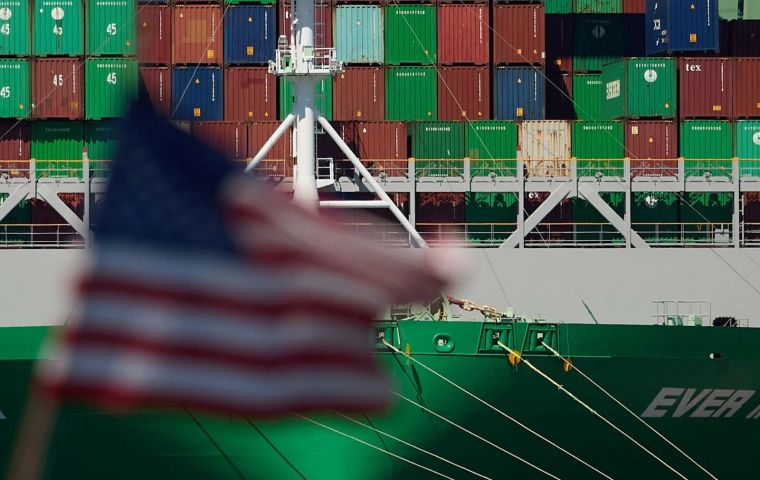MercoPress. South Atlantic News Agency
IMF revises region's growth downwards amid US tariff war
 The IMF adjusted its GDP growth forecast for Brazil downward for 2025 to 2.0% from 2.2%
The IMF adjusted its GDP growth forecast for Brazil downward for 2025 to 2.0% from 2.2% The International Monetary Fund's (IMF) April 2025 Global Economic Outlook, released Tuesday in Washington, revised global and regional economic forecasts downward due to the US-initiated trade war and associated uncertainties.
In the case of Brazil, the largest economy in the region, the IMF adjusted its GDP growth forecast downward for 2025 to 2.0% from 2.2%, and for 2026 to 2.0% from 2.2%, thus reflecting the impact of US President Donald Trump’s tariffs, althrough Brazilis less affected than other countries.
The 2025 growth is a slowdown from 2024’s 3.4% and lags behind emerging economies’ expected 3.7% growth, though it aligns with Latin America’s 2% and exceeds advanced economies’ 1.4%.
Inflation in Brazil is projected to rise to 5.3% in 2025 from 4.4% in 2024, then decline to 4.3% in 2026. Unemployment is expected to increase to 7.2% in 2025 and 7.3% in 2026, up from 6.9% in 2024, amid slower growth and higher inflation.
For Bolivia, the IMF projects 1.1% GDP growth and 15.1% inflation in 2025, with growth slowing to 0.9% and inflation rising to 15.8% in 2026. Bolivia’s current account deficit is expected at 2.5% in 2025 and 3% in 2026, with unemployment steady at 1%. This contrasts with Bolivia’s government projections of 3.51% growth and 7.5% inflation for 2025.
For Latin America, the IMF cut its 2025 GDP growth forecast to 2% (from 2.5%) and 2026 to 2.4% (from 2.7%), citing U.S. tariffs, geopolitical tensions, tighter financing, and weak performance in countries like Mexico.
The report highlights U.S. tariffs, peaking with near-universal rates on April 2, as a “major negative shock” to global growth, compounded by policy unpredictability and diverse economic impacts across countries. Global growth, already lackluster in 2024, faces a marked slowdown due to these trade disruptions.




Top Comments
Disclaimer & comment rulesCommenting for this story is now closed.
If you have a Facebook account, become a fan and comment on our Facebook Page!